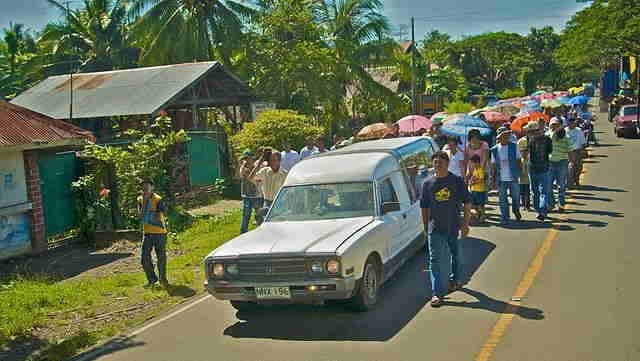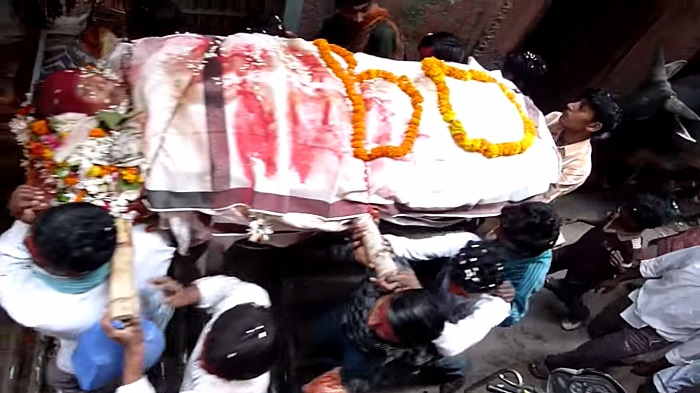

Filipino culture is filled with a variety of traditions, many of them stemming from the country’s long history of colonization and immigration. From the colorful pageantry of fiesta celebrations to the traditional rituals of courtship and wedding ceremonies, Filipino traditions are a rich tapestry of cultural influences. Here is an overview of some of the most popular Filipino traditions. One of the most popular Filipino traditions is the fiesta. These festive celebrations, which take place in towns and cities across the country, are typically held in honor of a patron saint or important figure in the local community. Fiestas often involve religious processions, concerts, and theatrical performances, as well as feasting and dancing. The Filipino courtship tradition is known as “panliligaw” or “harana.” It involves a series of steps in which the man expresses his interest in the woman. This custom often involves the man singing a serenade or poem in front of the woman’s home in the evening. If the woman’s family approves of the man, he may then be allowed to court the woman in a more traditional manner. The Filipino wedding ceremony is a colorful and joyous occasion, and usually follows a Catholic or Protestant service. During the ceremony, the bride and groom exchange rings and make promises to each other. After the ceremony, there is a reception, where the couple and their guests can enjoy food, music, and dancing. The Filipino tradition of “pamanhikan” is another important custom. This involves the groom’s family visiting the bride’s family to ask for her hand in marriage. The groom’s family typically brings food and presents for the bride’s family, as well as money to cover the cost of the wedding. The “binyag” is another important Filipino tradition. This is a baptismal ceremony for a newborn baby, and is usually held at church. At the binyag, the baby is given its name and is welcomed into the Catholic faith. Finally, the “pagmamano” is a tradition in which a child or adult bows before an elder and touches the elder’s hand with their forehead. This gesture is a sign of respect and gratitude, and is often seen during family gatherings. These are just a few of the many Filipino traditions that make this vibrant country so special. These customs are a reminder of the country’s rich cultural heritage and serve to bring people together in celebration and joy.

Ashes to Death Beads are a type of jewelry that are traditionally made from the ashes of a deceased loved one. They are usually made of glass beads and feature a small compartment filled with the ashes of the deceased. The beads are then strung together to create a necklace or bracelet. Ashes to Death Beads are often worn as a way to honor the memory of the deceased and to help cope with the grief and loss associated with death. The beads can also serve as a reminder of the beautiful life the deceased once lived and to celebrate the life of the deceased. The beads are often custom made, and some people choose to add special charms or gemstones to the beads to personalize them. These beads are then worn as a symbol of remembrance and respect for the deceased. Ashes to Death Beads are becoming increasingly popular due to their unique and personal nature. They are also a great way to ensure that the memory of the deceased lives on and is not forgotten. The beads can also be used as a way to bring comfort and solace to those who are grieving. The beads can be held close to the heart, allowing the individual to feel a connection to the deceased. This can help them to feel less alone during the grieving process. Ashes to Death Beads are truly a touching and meaningful way to honor the memory of a loved one. Not only are they a beautiful and symbolic way to remember and celebrate a life, but they can also provide comfort and solace to those who are grieving.

The Tower of Silence, also known as the Dakhma, is a structure used by members of the Parsi or Zoroastrian faith to dispose of their dead. It is a cylindrical tower made of stone or brick, generally located on top of a hill and surrounded by a circular wall. The dead are placed on the tower in a seated position facing the sun and exposed to the elements, including scavenging birds. The practice of exposing the dead to the elements dates back to ancient times, but the Tower of Silence was first used by the Zoroastrians of Persia during the 10th century. The belief is that the body should not be buried, as earth and fire are both sacred elements in Zoroastrianism. The body must not be cremated either, as this would pollute the fire. Therefore, the dead were placed in the Tower of Silence, where the sun and birds would dispose of them. The Towers of Silence are divided into three concentric rings. The innermost ring is for men, the middle for women, and the outer for children. The bodies are placed on stone slabs, which are connected to a central well, or ‘well of silence’. The well was used to collect rainwater which would wash away the remains of the dead. The platform is slanted slightly, so that the remains would eventually fall into the well below. The Towers of Silence are considered sacred places and are off limits to most non-Zoroastrians. They are normally located in isolated areas, far away from any living settlements. The Parsi community has a great respect for these sites and takes great care to ensure that they are maintained properly. The practice of exposing the dead in Towers of Silence has been largely discontinued in the modern era. The Parsi community in India has, instead, adopted a form of burial called ‘dokhmas’, which involves burying the dead in concrete structures. The Parsi community in Iran, however, still follows the traditional practice of using Towers of Silence. The Towers of Silence are an integral part of Zoroastrianism, and serve as a reminder of the community’s commitment to their faith and their reverence for the dead. They are an important part of the Parsi community’s history and culture, and continue to be a source of spiritual contemplation for many of its members.

The Parade is an exuberant and vibrant celebration held annually in the city of San Francisco. It is one of the most popular events held in the city, drawing thousands of participants and spectators from far and wide. The Parade is held on the third Saturday in June, and begins early in the morning with the raising of the San Francisco flag. The Parade begins with a procession of brightly colored floats and marching bands from around the world. The floats are elaborately decorated and feature various themes, such as the celebration of various cultures, the importance of education, and the promotion of tolerance and understanding. The marching bands play lively music for the crowd as they pass by. The Parade then turns into a street festival, with food vendors selling traditional dishes from around the globe and a variety of entertainment. There are also games and activities for kids, as well as live music and dance performances. Street performers add to the fun by doing aerial acrobatics and juggling. Around noon, the Parade culminates in a grand finale, featuring a large procession of floats and marching bands led by the Mayor of San Francisco. The Mayor delivers a short speech to the crowd, thanking them for their support and attendance. After the speech is over, the Parade disperses, and the streets return to normal. The Parade is a wonderful opportunity to celebrate the diversity of San Francisco and to honor the many cultures that make up the city. It is a time for people of all ages and backgrounds to come together and share in the joy of the city. The Parade features cultural performances from around the world, and it is an event that brings people together in friendship and understanding. It is a joyous celebration of the city’s unity and diversity, and it is sure to bring a smile to everyone’s face.

Water burial, also known as a sea burial, is a type of funeral service in which the deceased’s body is placed in a weighted casket or urn and is released into the open waters of a large body of water such as an ocean, a bay, or a lake. This type of burial is considered to be one of the oldest forms of burial and is seen in many cultures throughout the world. The practice of water burial dates back to ancient times, when it was used as a way to honor the dead and pay respects to their spirits as they passed on. In some cultures, the body was placed in a wooden boat or raft and set adrift, as a sign of respect for the deceased. In other cultures, the body was placed in a weighted casket or urn and sunk to the bottom of the body of water. In some cases, the body was cremated before being placed in the casket or urn. Water burials are often seen as a peaceful and harmonious way to lay the deceased to rest. The act of placing the body in the water is seen as a symbolic gesture of letting go and allowing the spirit of the deceased to be released into the waters and move on to their next life. In some cultures, such as the Viking culture, it was believed that the deceased would join the gods in the afterlife if they were buried in the sea. Water burial is also an environmentally friendly way to lay the deceased to rest, as it does not require the use of land or other resources. This type of burial also allows for the body to decompose naturally, which is healthier for the environment than traditional burial methods. Water burials are not allowed in all areas and it is important to check with local authorities to see if this type of burial is permitted. In some areas, it is only allowed in designated areas, such as designated burial grounds, and in other areas, permits may be required. Water burial is an ancient practice that has been used to pay respect to the deceased for centuries. This type of burial is seen in many cultures throughout the world and is seen as a peaceful and harmonious way to lay the deceased to rest. It is also an environmentally friendly way to lay the deceased to rest, as it does not require the use of land or other resources.

Famadihana is an ancient funeral ritual practiced by the Malagasy people of Madagascar. It is also known as the “turning of the bones” or “reburial.” It takes place every two to seven years and is a way for the Malagasy to honor their ancestors. Traditionally, it is a celebration of the deceased and their spirit. The ceremony begins with a traditional Malagasy prayer, and then the deceased family members’ bodies are removed from their tombs or graves. The bodies are wrapped in a colorful shroud, and the people participating in the ceremony will carry the shrouded bodies around the village. Music, singing, and dancing accompany the procession. Once the procession reaches the tomb or grave, the bodies are unwrapped and displayed to the assembled crowd. The bodies are then re-wrapped in fresh shrouds and placed back in their tombs or graves. This is done to show respect to the deceased, and to honor their spirit. After the bodies are re-buried, the participants in the ceremony will feast on the food and drink that has been prepared. During this time, there is much singing and dancing, and the attendees will pay their respects to the family of the deceased. Famadihana is an important part of Malagasy culture, as it is a way to honor and remember their ancestors. It is also an important part of the Malagasy people’s social life, as it is a time for the community to come together and celebrate the lives of the deceased. The ritual of Famadihana is a unique tradition that is still practiced in Madagascar today. It is a way for the Malagasy people to honor their ancestors and to celebrate the lives of those who have passed away. It is a time for the community to come together and share in the joy and sorrow of life.

Sky burial, also known as celestial burial or ritual dissection, is a funeral practice of the Tibetan and Mongolian people where a deceased person’s body is cut up and placed on a mountaintop, usually a sacred peak, to be eaten by scavenging birds. Although sky burial is not practiced in most Western cultures, it is a common form of disposal of the dead in Tibet and Mongolia, where the practice has a long history. Sky burial is believed to have originated as a way to save valuable resources as Tibet and Mongolia are located in arid, mountainous regions where fuel and trees for cremation are scarce. Sky burial also reflects the Buddhist belief that the body is impermanent and that the soul should be liberated from the body after death. The ritual begins with the body being washed and the eyes and mouth being closed. The body is then carried to the burial site by a group of monks or family members. Once at the burial site, the body is cut into pieces and placed on a flat, open-air platform known as a chöten. A lama or monk then makes offerings of barley flour and Tibetan incense to the four directions, and the body is left out in the open for the birds to consume. The practice of sky burial has generated much controversy in recent years, as some see it as a form of animal cruelty and an inhumane way of disposing of the dead. However, many Tibetans and Mongolians view the act as a way to honor the deceased and to return their body to the earth. They believe that by offering the body to the birds, the deceased can be reborn in the form of a bird and continue to live on in the sky. Sky burial is an ancient, sacred ritual that has been deeply ingrained in the culture of Tibet and Mongolia for centuries. Despite the controversy, many people in these regions continue to practice sky burial as a way to honor their deceased loved ones. The practice is seen as a way of providing a final act of love and compassion for the deceased, and is a reminder of the cycle of life and death.